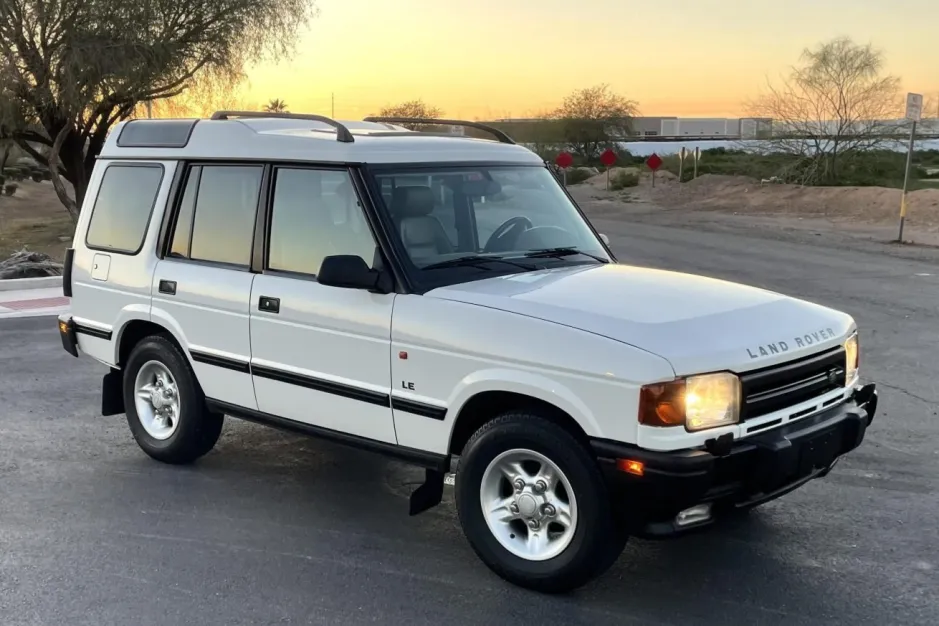Interested in buying a Land Rover Discovery 1? Here is your go to guide as you begin your search.
1. Know the Model History:
- The Discovery Series I was produced from 1989 to mid year 1999, with its North American debut in 1994.
- Based on the rolling 25 year rule, European cars from 1999 and earlier will be legal to import and/or register in the United States.
2. Check for Rust:
- This should be your first stop. Rust is a common issue with older Land Rovers, especially in areas with salted roads or high humidity. While a little rust is to be expected, if you can poke a hole in the body, move on!
- On the Series 1, pay close attention to the front footwells, door sills, wheel arches, and rear load floor for signs of rust or corrosion.
- The Series I frame holds up well compared to the Series II frame which suffers from rot but does not experience the same issues with the body.
3. Engine and Transmission:
- In North America, pre-1996 models have the 3.9L V8 with a distributor. All models after that have the 4.0L engine and electronic ignition. Both engines are the same size but Land Rover made the distinction based on updated ignition and a few other models. If you like the “reliance” of distributors pre-96 is your go to.
- European vehicles have multiple different diesel options which offer much better fuel economy than the thirsty V*
- Test drive the vehicle to ensure smooth acceleration and shifting. Look out for any unusual noises, vibrations, or issues shifting.
- Don’t expect to be smoking any tires off the line. However, there is ample power cruising in traffic and the torque off road is more than adequate.
4. Suspension and Drivetrain:
- Inspect the suspension components for signs of wear or leaks. The Discovery I was known for its capable off-road performance, so off-road abuse could have taken a toll on the suspension.
- Check the drivetrain for leaks, especially around the transfer case and differential seals.
- If you accelerate the truck and feel vibration or it begins a “death wobble” around 70 mph, and suspension rebuild is in order. While not too difficult, it will require replacement of quite a few parts.
- Examine the universal joints, or U-joints that connect the front and rear prop shafts. The rear prop shaft also has a rubber coupling that unless already replaced, will be worn out after 20+ years.
5. Electrical System:
- Electrical gremlins are not uncommon in older Land Rovers. Test all electrical components, including lights, power windows, central locking, and the stereo system.
- Common issues are window regulators not working resulting in windows being stuck down, sunroofs not opening, and the cruise control being inoperative.
- Look for any warning lights on the dashboard, as they could indicate underlying issues. Specifically brake lights which could either be as simple as low brake fluid or a bigger issue with the sensors. The SRS airbag light may be illuminated but it is a known issue and can be remedied.


6. Interior Condition:
- Examine the interior for signs of wear and tear, especially on the seats, dashboard, and trim.
- The front door cards are know to brown and crack in Western cars. Your best bet is to live with it or find a replacement set.
- The front of the dash pad will also curl from heat and sun damage. If it does, again live with it or find a replacement as there isn’t much of a long term fix.
- Check for any water leaks, as the sunroof and windshield finish trim can deteriorate over time. The floor mats hold an insane amount of water which can cause rust to form in the front foot wells.
- Headliners and known to sag and will likely need to reglued or replaced.
7. Service History:
- Ask for service records to verify that the vehicle has been properly maintained.
- Look for evidence of regular oil changes, fluid flushes, and major services.
8. Off-Road Modifications:
- Many Discovery owners modify their vehicles for off-road use. While these modifications can enhance performance, they can also put additional strain on the drivetrain and suspension.
- Inspect any aftermarket modifications carefully to ensure they were installed correctly and haven’t caused undue wear and tear.
9. Price and Value:
- Keep in mind that while older Land Rovers can be affordable to purchase, they may require significant maintenance and repairs down the line if they have been neglected.
- You can easily find driver quality examples on FB Marketplace, Craigslist or other sites for a couple grand.
- Prices for top examples are starting to tick up with low mileage rare trucks reaching into the mid $30,000 range, still well below the top NAS Defender or RRC prices.
10. Get a Pre-Purchase Inspection:
- Finally, consider having the vehicle inspected by a qualified mechanic before making a purchase. They can provide valuable insights into the vehicle’s condition and potential issues.
- If you live in California, feel free to reach out for any questions on local trucks.


